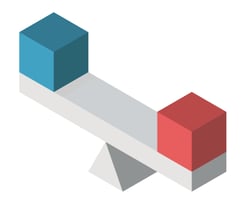 It takes many people to design and develop an amazing product. Many companies with large complex hardware, software, or cyber physical products can have numerous teams working simultaneously and in tandem with each other to ensure the best model makes it to the market. Successful products happen when great minds and teams work together. While it’s easy to imagine that this collaboration happens organically, the reality is that teamwork needs to be fostered.
It takes many people to design and develop an amazing product. Many companies with large complex hardware, software, or cyber physical products can have numerous teams working simultaneously and in tandem with each other to ensure the best model makes it to the market. Successful products happen when great minds and teams work together. While it’s easy to imagine that this collaboration happens organically, the reality is that teamwork needs to be fostered.
While collaboration between different teams is vital for product development, the engineering department and the product management team, in particular, need to work well together. When these branches communicate efficiently, following the product roadmap is easier.
The following are some useful tactics and strategies to support cross-collaboration between product management teams and engineering teams:
- Clarify your goals
- Understand the team dynamics
- Build a culture of collaboration
- Establish regular team check-ins
- Share rationale for prioritization
- Leverage collaboration tools
- Use integrative software to collaborate
Clarify Your Goals
 Your product managers should always know the company goals, but what about the other product stakeholders? The priorities of the company should be the compass that guides all product development, alongside insight from market research, customer feedback, and technical feasibility. The product managers are responsible for communicating this information to all stakeholders, including the engineers.
Your product managers should always know the company goals, but what about the other product stakeholders? The priorities of the company should be the compass that guides all product development, alongside insight from market research, customer feedback, and technical feasibility. The product managers are responsible for communicating this information to all stakeholders, including the engineers.
When everyone involved in product design and development understands the broader context of what they’re trying to achieve, they’ll make better decisions not only about the product but about their own objectives.
Understand the Team Dynamics
 Effective collaboration with engineering teams requires insight into the dynamics of each department. The more complex a product gets, the more engineering teams may be involved in the development. For example, cyberphysical products will have engineers working on different components of the hardware, while software engineers will be working on the software side of the product.
Effective collaboration with engineering teams requires insight into the dynamics of each department. The more complex a product gets, the more engineering teams may be involved in the development. For example, cyberphysical products will have engineers working on different components of the hardware, while software engineers will be working on the software side of the product.
Product managers will also be working closely with software engineers long after the launch of the physical product, as the software roadmap for the product will continue with periodic releases of new features, updates, and upgrades. When product managers and their colleagues recognize the diversity of skills and expertise within each of their engineering departments, the easier it will be to collaborate and share ideas.
Build a Culture of Collaboration
 Cross-functional collaboration doesn’t happen by accident. Leaders must encourage their departments to work together. Facilitating regular cross-functional meetings is one way to connect different teams, such as product management and engineering. Using transparent, open communication channels is another way to ensure these stakeholders stay up-to-date on the latest news between meetings.
Cross-functional collaboration doesn’t happen by accident. Leaders must encourage their departments to work together. Facilitating regular cross-functional meetings is one way to connect different teams, such as product management and engineering. Using transparent, open communication channels is another way to ensure these stakeholders stay up-to-date on the latest news between meetings.
Building a culture of collaboration also requires teamwork to work towards collective goals. When you create an environment where sharing ideas, insights, and feedback can be done honestly, your product teams will be more likely to stay aligned with those goals.
Leaders can ensure cross-collaboration stays productive by establishing a sense of shared responsibility. When each individual knows their work moves the product closer to launch success, each team member will be motivated to do their part.
Establish Regular Team Check-Ins
 The strongest collaborations happen when teams meet together for regular check-ins. Whether your team leads are meeting in person or virtually, there are strategies to ensure your meetings are productive and cover the necessary information everyone needs. Depending on the purpose of the meeting, you can allow time for open discussion and problem-solving to make important product decisions or keep the process tight to cover specific issues.
The strongest collaborations happen when teams meet together for regular check-ins. Whether your team leads are meeting in person or virtually, there are strategies to ensure your meetings are productive and cover the necessary information everyone needs. Depending on the purpose of the meeting, you can allow time for open discussion and problem-solving to make important product decisions or keep the process tight to cover specific issues.
Efficient meetings have an agenda to keep everyone on topic and ensure there is time for all necessary discussions. The frequency to which you hold meetings will depend on updates to the roadmap, the progress of a product, and whether or not issues arise. Meeting frequencies will also depend on whether your product development strategy follows Agile, Stage-Gate, or Hybrid methodologies.
Share Rationale for Prioritization
 Cross-collaborations lead to many ideas for product improvements, but not all ideas get approved. Product teams need to have a system in place to filter ideas and prioritize the best ones. Whether you use the effort-to-value ratio, a Kano analysis, or other methods of prioritization, everyone needs to be on the same page and understand the rationale for prioritization.
Cross-collaborations lead to many ideas for product improvements, but not all ideas get approved. Product teams need to have a system in place to filter ideas and prioritize the best ones. Whether you use the effort-to-value ratio, a Kano analysis, or other methods of prioritization, everyone needs to be on the same page and understand the rationale for prioritization.
One reason why an idea may not make the prioritization list is that it is not technically feasible to build. In this scenario, cross-functional meetings are very important. If the design team and customer support team push an idea forward based on customer needs, but the proposed solution isn’t technically feasible, the engineering team needs to be present to say so. Not including the relevant stakeholders in product meetings can lead to delays and increased costs.
Leverage Collaboration Tools
The larger the organization, the more important it is to have a communication system in place to avoid the formation of silos. Leveraging collaboration tools helps teams stay connected outside of meetings and share the right information in the proper location. Setting clear expectations will help everyone know when to put details in an email, when to make a phone call, and when to use communication tools such as Slack or Microsoft Teams.
Use Integrative Software to Connect Teams
 Large companies require product management platforms that can accommodate the complexity of their product roadmaps. Product managers need to be able to monitor entire product portfolios at a glance to understand dependencies and find opportunities, while also analyzing each product to see the progress and status updates. Other key visuals that can help make product managers’ lives easier are key metrics to track the success of a product and alerts when there are issues that require attention.
Large companies require product management platforms that can accommodate the complexity of their product roadmaps. Product managers need to be able to monitor entire product portfolios at a glance to understand dependencies and find opportunities, while also analyzing each product to see the progress and status updates. Other key visuals that can help make product managers’ lives easier are key metrics to track the success of a product and alerts when there are issues that require attention.
Engineering teams work on their own project management and day to day systems built to make managing ideas, issues, and tasks streamlined for engineering departments. While the product managers are watching the product roadmap, the engineers need a way to provide updates and regularly brainstorm on the direction of the product with product management. This can happen through integrations between project management and product management systems.
Software Integrations for Better Product Roadmap Management
Using software that can integrate both engineering roadmaps and product roadmaps is a game-changer in keeping both sides informed on the progress of features and working towards the collaborative goal. Our customers asked for a Gocious-JIRA integration, and we made it happen to help product management teams collaborate closely with their engineering departments. Now, product managers can monitor the progress of approved features without leaving their product roadmap management software.
Making Cross-Collaboration in Product Management Easier
Here at Gocious, we create software that makes cross-collaboration in product management easier for all teams. Our JIRA integration does this by helping product management teams and engineering teams reduce friction and communicate more efficiently on their projects. This is just one of the new features we’ve released to support product developers, and we continue to develop new capabilities to streamline your work.
Find out more about the capabilities of Gocious by booking a demo with us. We’ll meet with you to show you around the program, get to know your needs, and discuss software features and how you can make them work for you and your company.


